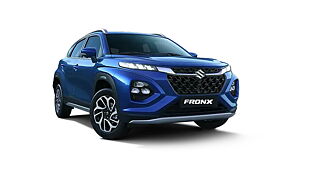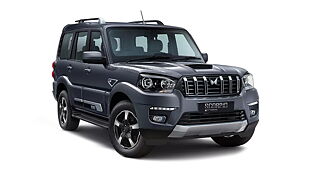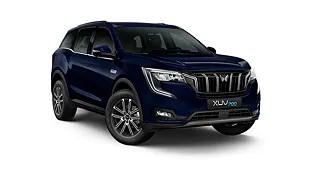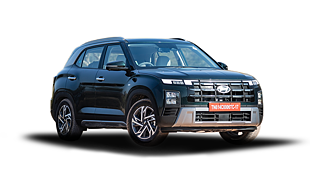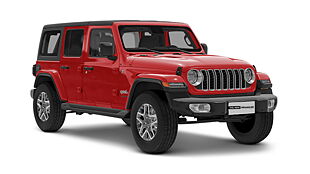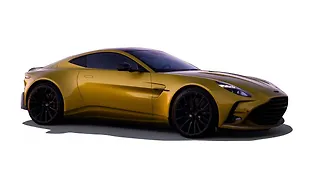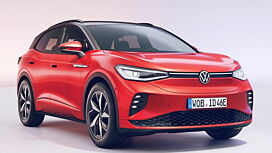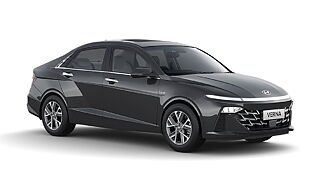Introduction

Hyundai has hit it off fairly well with its new range of products, the ‘i’ series. The i10 was essentially a replacement for the Santro, and the i20 does the same with the Getz. Hyundai hasn’t been known for its diesel hatches, although its sedans have sold appreciably. The first diesel hatch that HMIL offered the Indian public was the Getz CRDi, but the car was overpriced and the dated looks turned many prospective buyers away. Hyundai has now introduced the i20 with a 1.4-litre CRDi engine to clock more miles per hour and litre, and this could be an ideal premium hatch for customers looking for a quick diesel city car.
Exterior

Hyundai has designed the i20 with strong European influences, following the recent trend that began with their new design philosophy. The i20 has a large number of longitudinal lines and curves all over the car with a few running across its front and rear doors on both sides which makes the car look very aggressive.
The front end of the car features leaf-shaped clear lens head lamps with the side indicators placed at the outer corners. The lamps taper on the inside towards the small black grille which sports the chrome H logo at the centre surrounded by body-coloured work. The lower front end corners have C-shaped surrounds for the fog lamps. The central power bulge which begins from the Hyundai badge on the grille runs back over the hood looks like the Mercedes SLK nose cone design. This gives the car more visual appeal than an ordinary hatch.
Hyundai has added a bold waistline crease that rises toward the rear – the way this crease curves and falls to the rear fender over the wheel arch adds a lot of power and aggression to the design. However, the mirrors of the i20 are very Getz-like and the top-end variant of the i20 features 5-spoke alloy wheels.
The rear of the hatch has a thick C-pillar and tail lamps shaped like parallelograms with rounded corners extending to its edges. The rear bumper sports small vertical and horizontal lines and a recess for the number plate. The bootlid incorporates a stylised Hyundai logo which is also the boot release. A spoiler could have added some more style to the rear of an otherwise really stylish car – details like the triangular side indicators aren’t available on any other hatch today.
Interior

The Korean designers have given the i20 brown and beige with some black on the dash. The steering wheel has audio controls on it and there are three dials in the instrument gauge cluster, where the small central dial has a temperature gauge and fuel level indicator mounted on either side. The speedo is backlit with red lights with no option to adjust the brightness. The electrically adjustable mirrors can be opened or folded at the touch of a button even when the key isn’t inserted, and the multi-functional buttons on the steering work without the key turned to the ‘on’ position, which are features not found in many other cars.
The centre console has a digital multi-function display which displays the time, date, distance covered, current audio track, fuel efficiency and ambient temperature. It can be turned off with the button called ‘Dark’. The centre console features two knobs for the air-conditioning unit and a centrally integrated audio system located above it, and points for USB and other auxiliary inputs below it; adjacent to the cigarette lighter with the vertical vents on both sides. The sound quality of the audio system on the i20 is decent, however our test car gave out an odd sound from the speakers – like radio interference – whenever we honked while playing through the auxiliary input. The centre console also has an indicator and warning for seatbelts for all five passengers. The gear knob has a combination of black, chrome and brown, with a slot ahead of the lever to place your mobile phone and two cupholders followed by one for bottles behind the knob. The glovebox is illuminated and chilled, which is a nice touch.
The seats of the i20 are flat and didn’t feel like they were bolstered enough in the right places. It took all of us quite a few attempts until we found a seating position that felt comfortable. There is immense legroom in the front row, which will comfortably seat six-footers. Short drivers will particularly like the seat height adjustment while a steering wheel that tilts and telescopes and a dead pedal help with overall driver ergonomics. However, the rear gets cramped when tall people are seated comfortably in the front seats despite it having a wheelbase of 2525mm, which longer than the Fabia, the Punto and even the new Indigo Manza, which is 2520mm! Rear seat occupants will also feel a little claustrophobic due to the small, tapering rear windows and thick C pillars. The rear seat splits 60:40 and the boot of the i20 seems big when you consider the volume (295 litres) but the space isn’t as usable as a Punto or a Fabia’s boot’s.
Ride and Handling, Steering:

The Hyundai i20 is certainly one of the best cars we’ve used in the city; it goes through traffic faster than a glutton goes through dessert at a buffet. The hatch’s handling is astounding within city speed limits and it’s a complete hoot to drive through traffic. Point the car to where you want it to go, and floor it! However be warned that spirited starts from traffic lights means plenty of torque steer and burnt rubber. Traction control would be a welcome addition – something which the new lineup of Hyundai CRDi powered cars need. Although the handling is fairly predictable there were a couple of instances where we had the rear end step out of line and were quite surprised. We do think it could have something to do with the tyres our press demonstrator was running.
Diesel engines at the end of the day are heavier than petrol engines due to heavier engine parts, most notably the block, that bear the extra stress of greater compression. The i20 has a extra weight at its front end (74kg over the 1.2-powered variant) which has affected its handling.
The i20 has a light steering which is highly responsive until the turbo kicks in after which the steering tends to feel light momentarily – maybe due to the suspension setup. The tight turning radius coupled with the light steering makes parking convenient and effortless. Talking about cornering, our confidence to dive into a corner at high speed wasn’t too high due to the suspension set-up. All this car needs is a bit of fine tuning in its suspension and alignment and this car will be one of the best handling ones around.
The i20 rides well at low speeds, but gets bouncy at high speeds, which the engine can haul the car to in no time at all. One common complaint all of us had was the short travel of the front - even at moderate speeds, it regularly bottomed out, undermining driver confidence.
Engine, Drivetrain, Fuel Efficiency

Engine:
The 1.4-litre common rail engine used in the i20 is a refined Hyundai CRDi engine. The 16-valve 89 bhp 1396cc engine produces a maximum of 220Nm of torque giving the car a head start when the throttle is nailed, but when the turbo isn’t assisting things, the engine feels sluggish and this can be quite annoying in bumper-to-bumper office. The car did 0-100kph in 12.6 seconds during testing.
The i20’s CRDi engine is noisy and the strong turbo kick at about 1800rpm will put a wide grin on your face. The turbocharger itself doesn’t intrude with the typical high-pitched whine characteristic of turbos.
The i20 was initially launched with the 1.2-litre petrol engine. This is the Kappa engine which was first seen on the i10. It is a highly refined engine which produces a maximum power of 80bhp and a torque of 112Nm. With the i20 weighing a little more a ton, on paper the car feels underpowered, but once the engine crosses 3000rpm, it means serious business. The true power of the car is unveiled. The performance isn’t staggering, but is definitely one of the best in its class. In our test, the i20 did a 0-100kph in 14.9 seconds and did a quarter mile in 19.4 seconds which is good when compared to its competition.
Drivetrain:
Hyundai has designed the gear ratios of the i20 to suit city as well as highway driving. The short throws and positive engagement makes shifting easy but the shift gate is too small which could lead to some fouled shifts when in a hurry. In the 3rd gear, the car does 30-50kph in 6.1 seconds and 30-50kph in 4th gear in 11.6 seconds. In the 5th gear the car did 50-70kph in 15.7 seconds.
Mileage:
The i20 CRDi is a little thirstier than expected. The 1.4-litre engine on an average travels 12.8km on a litre of diesel. During testing, we achieved an efficiency of 10.5kpl.
Braking, Tyres & Safety

Braking:
The Hyundai i20 has disc brakes at the front and drum brakes at the rear, equipped with ABS (Anti-lock Braking System). Our car came to a complete standstill from a speed of 80kph covering 33.8 metres. The brakes are fine at low speeds, but feel inadequate at the speeds that this engine is capable of.
Tyres:
Hyundai has set the i20’s standard tyre profile as 185/65 R14. Our test car ran on Apollo Accelere tyres that were noisy and didn’t offer reassuring grip because they are designed for longer life, which compromises some handling characteristics. With an engine this powerful, tyres with more grip would have been nice.
Safety:
The i20 has safety features like most of its competitors do. Active safety features on the i20 include the Anti-lock braking system whereas the passive includes dual airbags and three-point seat belts for all five passengers.
The Hyundai i20 has been given an overall rating of 5 stars by Euro-NCAP. A notable feature that the tests highlighted was the ability of the car’s bumpers to absorb impact thus reducing injury to pedestrians.
Overall Evaluation:

The i20 ticks all the right boxes for those who want a good city car: it has sharp looks, handles well in city traffic, has a powerful diesel engine and feels built to last. There are a few letdowns, like the interior space and turbo lag but in the light of Hyundai’s legendary service, the ownership experience as a whole will be positive. If you’re a young couple on the lookout for powerful diesel car for city use, the i20 CRDi with its powerful engine, sharp looks and high residuals should be at the top of your list.
Test Data
Engine Specifications
1396cc, four cylinders in line, common-rail turbodiesel, 90bhp@4000rpm, 220Nm@1750rpm View specifications
Speedo Error
|
Max in Gear
| Gear | Speed (kph@rpm) |
|---|---|
| 1st | 44.4@5100 |
| 2nd | 81.9@5100 |
| 3rd | 124.4@4950 |
| 4th | 163.8@4700 |
| 5th | 170.1@3800 |
| 6th | - |
Performance Test Data
| Top Speed | 170.1kph |
|---|---|
| 0-60kph | 5.1secs |
| 0-100kph | 12.6secs |
| Quarter Mile (402m) | 18.5secs |
| Braking 80-0kph | 33.8metres |
| 30-50kph in 3rd | 6.1secs |
| 30-50kph in 4th | 11.6secs |
| 50-70kph in 5th | 15.8secs |
Fuel Efficiency
| City | Highway | Overall | Worst | |
|---|---|---|---|---|
| Mileage (kpl) | 14.9 | 10.5 |
Test Data
Engine Specifications
1197cc, Petrol engine View specifications
Speedo Error
|
Max in Gear
| Gear | Speed (kph@rpm) |
|---|---|
| 1st | 44.9@6500 |
| 2nd | 88.4@6500 |
| 3rd | 131.5@6500 |
| 4th | 153.2@5600 |
| 5th | |
| 6th | - |
Performance Test Data
| Top Speed | 153.2kph |
|---|---|
| 0-60kph | 5.8secs |
| 0-100kph | 14.9secs |
| Quarter Mile (402m) | 19.4secs |
| Braking 80-0kph | 36m |
| 30-50kph in 3rd | 5.5secs |
| 30-50kph in 4th | 8.9secs |
| 50-70kph in 5th | 11.7secs |
Fuel Efficiency
| City | Highway | Overall | Worst | |
|---|---|---|---|---|
| Mileage (kpl) | 12.4 |
![Hyundai i20 [2008-2010] Image Hyundai i20 [2008-2010] Image](https://imgd.aeplcdn.com/272x153/cw/cars/discontinued/hyundai/i20-2008-2010.jpg?q=80)


